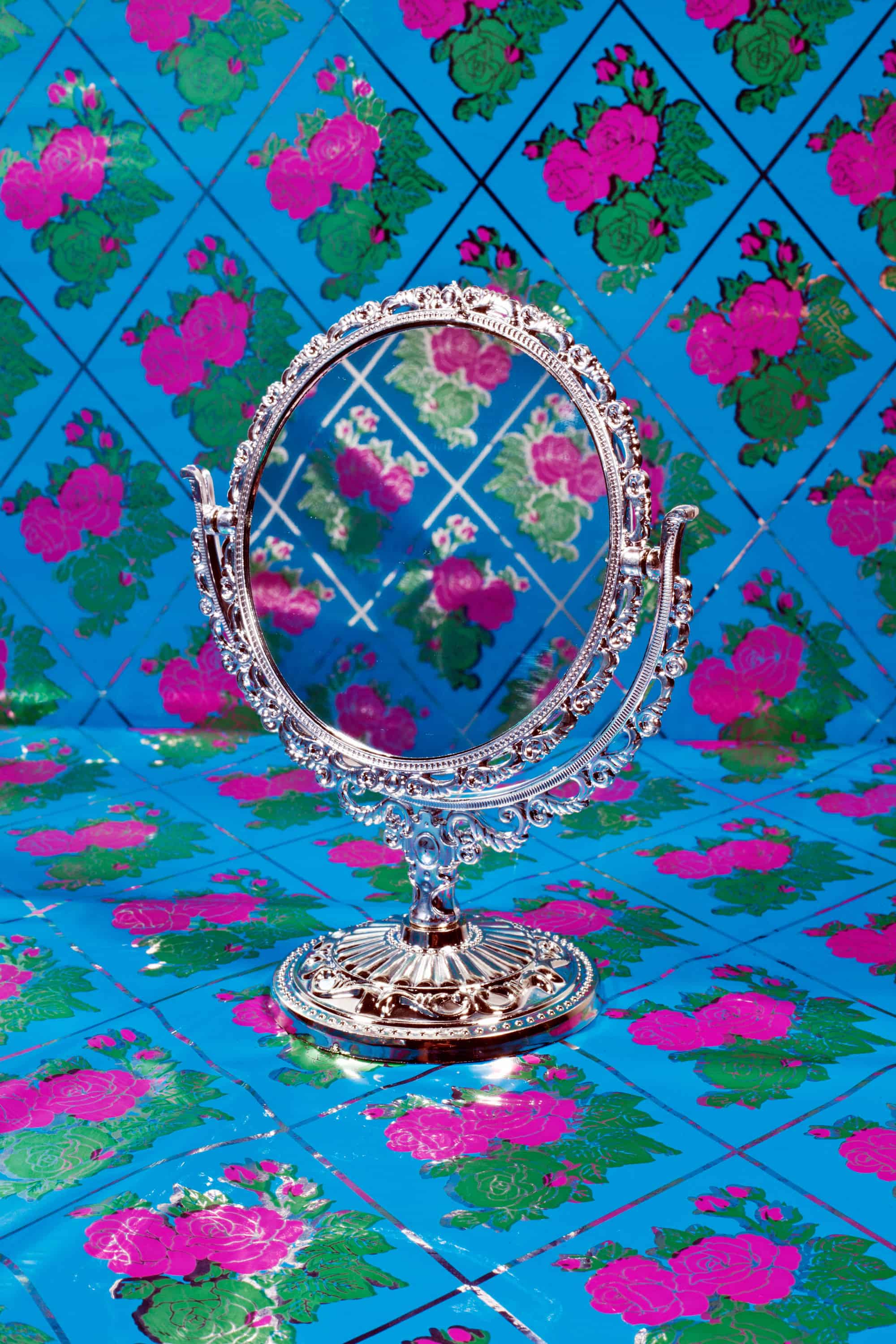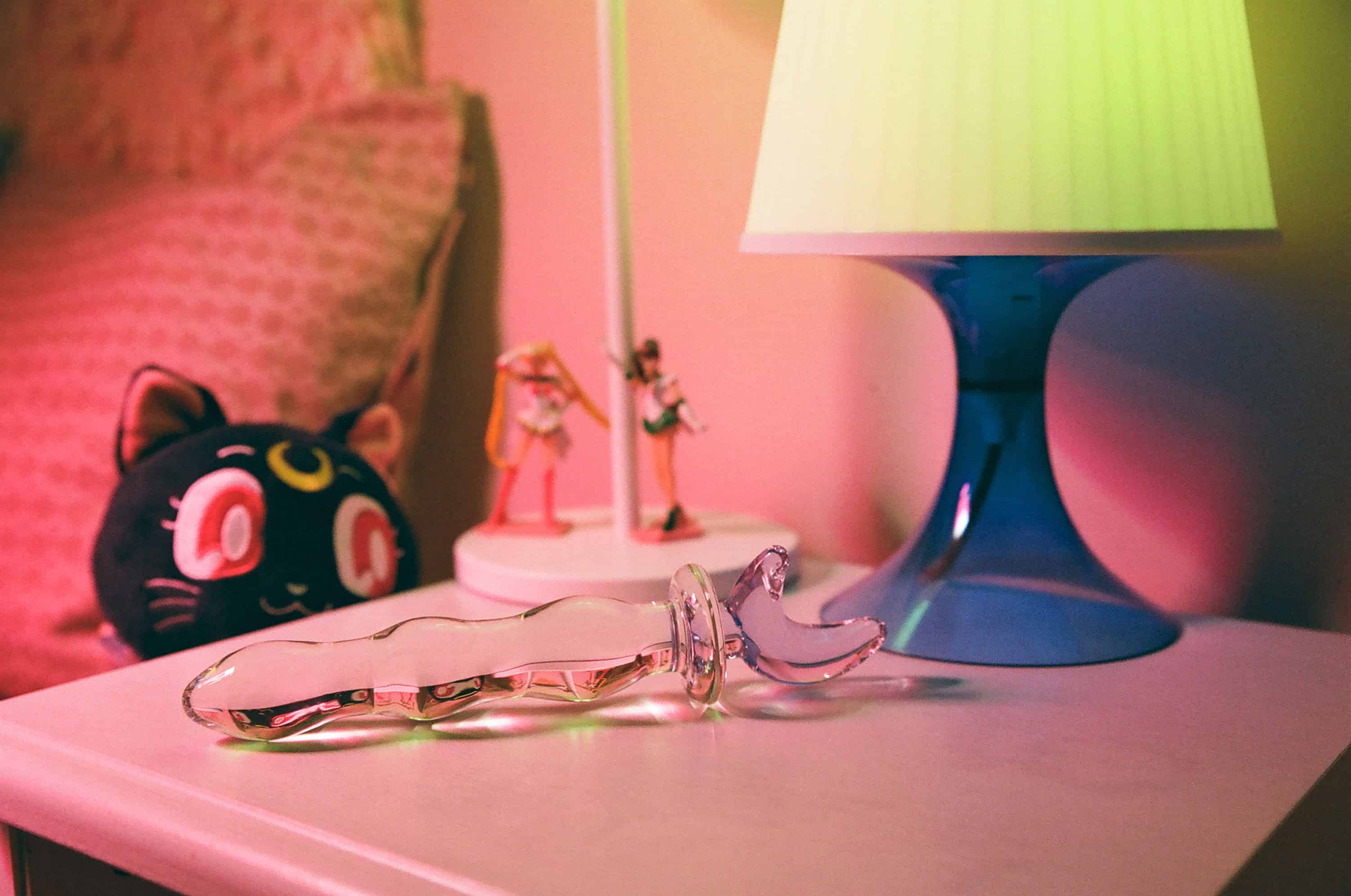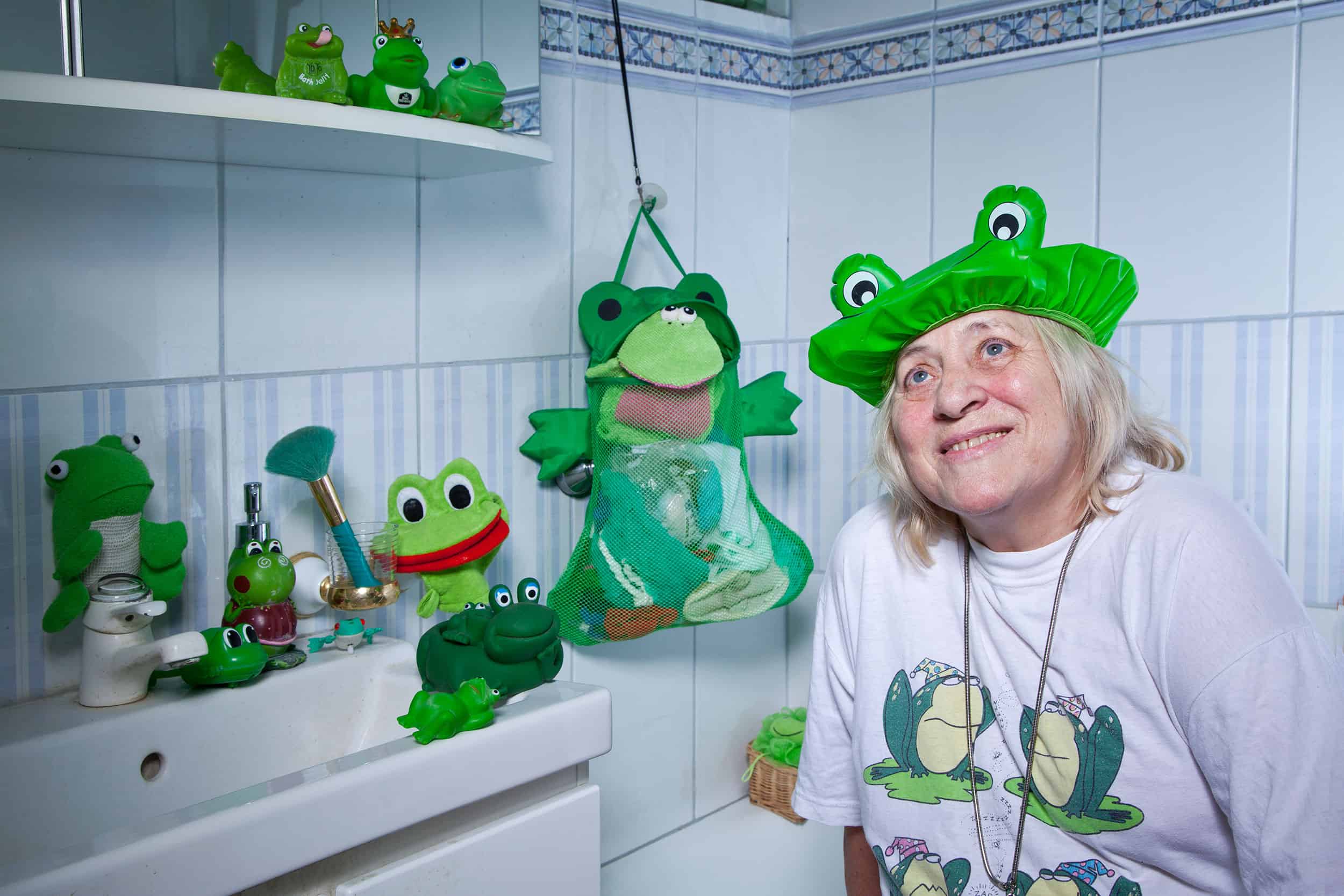I had a pleasure to talk with Eva Szombat – a photographer working and living in Budapest – about young Hungarian photography and the colourful reality that can be found on her pictures. We discussed her inspirations and aesthetics of the works as well as how to find happiness. In one of her new projects, Eva turns her lens on interesting characters and examines the ways women find pleasure in life.
Éva Szombat, Practicioners
Éva Szombat, Practicioners
PG: When I first saw your photographs I was entranced by vivid colours and kind of surreal portraits. At that time, I was responsible for giving guided tours of the exhibition The Way They See. An Overview of Hungarian Photography at the National Museum in Warsaw. I started to wonder how should I describe your artistic oeuvre. I decided to portray young Hungarian photography as a disenchantment of the tragic history and close relation to old masters. I am curious if you agree with this image of young Hungarian photography. It is believed that Hungarian photography occupies a distinctive place in the history of this field of art. I can only imagine that it must be difficult to break with the past.
ESZ: I’m part of a generation that grew up in the 1990s. It was shortly after the Iron Curtain was lifted and we had almost free access to western culture. That period was an especially colourful, interesting, and very vivid time in Hungary. Suddenly, no restrictions of the socialist regime were imposed on us. It was as if our tragic past was like a nightmare the whole country had just woken up from.
Being a child in the 1990’s was wonderful because I was exposed to those brilliant colours and styles on Music Television, Cartoon Network, or even on the Internet. I think all those elements had a huge impact not only on my visual style, but also on the style of other photographers, who were born in the same era. What you have noticed is probably a more ironic, detached approach to their subject matter, but I think that is a global issue.
I don’t think that neither are we, as photographers, disenchanted with the old masters, nor am I trying to break with any tradition. Of course, the old masters occupy a place in history, just as we hope to do one day. There are plenty of people who try to follow in the footsteps of such great artists as Capa or Moholy-Nagy, but personally, that’s not the path I chose for myself.

Éva Szombat, “Happiness Book”, 2014
PG: As I mentioned before, at the exhibition, I saw colourful pictures – from your project Practitioners and Happiness Book. I had the impression that you presented your country as a place of happiness. Is it possible? It is known that Hungarians are one of the gloomiest nations in the world. Honestly, I often think the same way about Poles.
ESZ: I admit, it wasn’t easy to show Hungary as a place of happiness! However, that was the challenge that inspired me to do the project. I think that our language, even our culture is coded to be as depressing as possible. That is the reason why I decided to make a basic instructional guide for happiness. The tagline of the book is something my friend, Oliver Arthur once said: Happiness is like maths, you have to learn it! I think that’s absolutely true, we have to learn to appreciate and enjoy our lives, how to be and remain happy. After the fictional, created world of that book, I decided to see how it can work in real life. I was looking for people, individuals, communities, spontaneous situations, that manifest signs of happiness. Some of the people I found have survived a tragedy, or are currently in a state that shouldn’t grant with happiness, but they are still working hard to remain happy. This is why I called the project Practitioners. Happiness is not a steady state, you have to practice constantly. And that’s especially true for Hungarians. We are often compared to Poland, there are a lot of similarities between our countries.
PG: It seems to me that happiness and pleasure are important topics to you. By choosing these subjects are you trying to deal with the past, with the tragic history of Hungary? You were participating in a project Home away – inspired by Robert Capa maxim – It’s not enough to have talent, you also have to be Hungarian. How do you understand his words? What was your artistic answer?
ESZ: My project Home Away was completed during a one-month long scholarship in New York. I was still exploring the subject of happiness, and I was looking for Hungarians, who found their happiness by leaving the country. There is something stifling about Hungary. It’s a small country, landlocked, and we are still hung up about our past and the past transgressions about us, while worrying about the future at the same time. The people I chose for Home Away were those who made an extremely difficult decision to leave Hungary in hope for a better future. That was five years ago, those people are still living there, and they seem to have found their destinies.
It’s not enough to have talent, you also have to be Hungarian is an interesting quote from Capa, however, he could have added and you also have to leave the country, because all the world-famous Hungarian photographers (Capa, Kertész, Brassaï, Moholy-Nagy) emigrated.
I’m not that interested in exploring the tragic past of Hungary. I think there are historians who are responsible for that. I’m trying to address our sometimes tragic present, and my work is my way of dealing with it.

Éva Szombat, “Happiness Book”, 2014
PG: Your picture was chosen for the official poster of the FOTO WIEN Festival 2019. It seems that during the festival you referred to the subjects of the past and nostalgia, were they connected to your earlier photo projects?
ESZ: The FOTO WIEN poster was an image from Happiness. I’m not that motivated by nostalgia, I’m more interested in what surrounds us, and I always notice objects that are remnants of earlier eras, but I’m not especially drawn to them. However, I did start working on a series about the nostalgia of others two years ago: when I turned 30 I noticed that there is a style in vogue that I had lived through as a child. I used to hear older people complaining that marbled jeans were back, but here I am, seeing Buffalo and Fila shoes, and Fido Dido everywhere. I don’t mind though, it’s just interesting to see how the mass-produced products of my childhood have this supposedly ironic quality now. So, I started taking photos of people who were extremely dedicated to certain eras of fashion, mostly from the times before they were born. I think it’s fascinating to discover what inspires a person born in the 1990’s to dress as someone from a decade earlier.
PG: How can you describe your aesthetic and how do you find your inspiration?
ESZ: Some people keep describing my works as kitsch, but I’m not really comfortable with that label, because kitsch implies irony, and I have a sincere attraction and interest in the people and objects I photograph. My work is emotional and curious, and I would never mock anyone. I’m honestly attracted to imperfection, and I’m inspired by whatever surrounds me: the things I come across on streets or in shops. I watch a lot of films, series, I listen to music, podcasts, read books and go to exhibitions. I think the most important thing is to never close yourself off, so inspiration has an easier job finding you. Currently, I’m watching Euphoria on HBO, reading a biography of Vincent Price, and listening to several podcasts about sexuality.

Éva Szombat, Practicioners
PG: What is important to you when it comes to your exhibition? How do you want to impress the audience? I remember that in Warsaw, your works were grouped, creating as if an altar.
ESZ: The process of creating an image does not finish when I press a button. I think it is important to find a right way to present it. I like to create an intimate environment for my photos, my diploma work at university was presented in a custom-built room. I consider the frame and space a continuation of the image, I like to give the spectator an opportunity to get immersed in a different world while looking at my work. However, it is crucial that these external elements connect and complement each other, and the presentation doesn’t damage or muddle the message up.
PG: Is the happiness aesthetics, which you proposed, characteristic for the young generation of Hungarian photographers?
ESZ: I wouldn’t generalise, because young Hungarian photographers are working in a wide variety of styles, in a similarly wide field of approach. There are some of us, who are happy, but there are plenty of sad aesthetics as well. Please remember, people like to feel sad in this country.

Éva Szombat, ’Four Walls, Three Holes: Bea’ -working title
PG: Referring to the subject of pleasure, I would like to ask you about your new project Four Walls, Three Holes, which you are working on. Are you planning to make a change in Hungary, make women’s lives easier and more enjoyable? Does this project refer to the past?
ESZ: No, this project is absolutely about the present times. I want it to be a snapshot of the Hungarian women in this specific period. I have to admit, I’d love to change something in this country, I would love it if women would be honest about what they like, and wouldn’t be ashamed of it.
The series is about women and their sex toys. I photograph them as a two-page spread, and I also conduct interviews with them on this subject, on their relationship with their joy and sexuality. The series began from my own experience, about the expectations of how a woman should behave. For a long time I was as an obedient girl, who was trying to please everyone. However, the origins of these expectations are rooted so deeply that sometimes I am still fighting against them, even though I’m an adult woman, who has an absolute right to snap back to anyone who is trying to belittle me.
A lot has changed in the past few years, the #MeToo movement and the widespread acceptance of body positivity campaigns are making the world a better place for women. However, the Hungarian government is going in an opposite direction, trying to put women back into a box we have left decades ago, trying to tell us how to dress, act, and bear children property. We are always taking two steps forward and one step back, although that’s still progress, I guess.
edited by Magdalena Kuźmak
Éva Szombat, ’Four Walls, Three Holes: Anna’ -working title
Éva Szombat, ’Four Walls, Three Holes: Julcsi toys’ -working title











